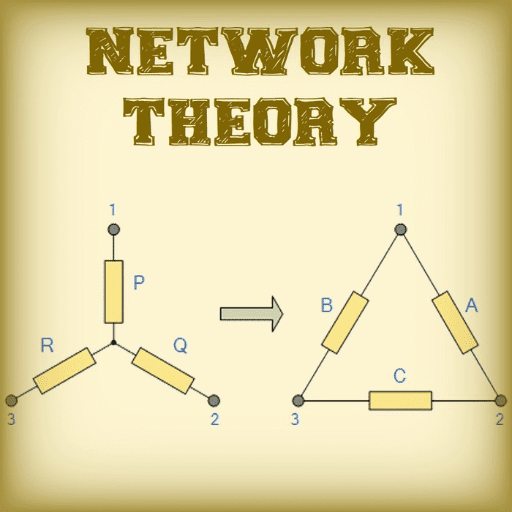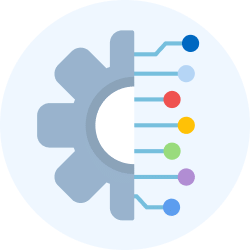Data Converters | Digital Circuits - Electronics and Communication Engineering (ECE) PDF Download
| Table of contents |

|
| Introduction |

|
| Types of Data Converters |

|
| Specifications |

|
| Conversion Time |

|
Introduction
All real-world things—like temperature, light, or sound—are analog, which means they change smoothly and can have any value at any time. For example, the temperature might go from 20.1°C to 20.2°C to 20.3°C and everything in between. We can turn these into electrical signals called analog signals, which also change smoothly and can be any value in a given moment—like a wavy line that moves up and down.

But a digital signal is different. It doesn’t flow smoothly—it jumps suddenly from one level to another, like steps on a staircase. And it only has a limited number of values it can be, like just 0 or 1, or maybe a few more steps, depending on the system. Think of it like a light switch that’s either off or on, not halfway.
Types of Data Converters
Circuits that work with analog signals (the smooth ones) are called analog circuits—like the part of a microphone that picks up your voice. Circuits that work with digital signals (the step-like ones) are called digital circuits—like the part of your phone that stores music. A data converter is a special circuit that changes data from one type to the other, so these two kinds of circuits can talk to each other.There are two main types of data converters:
- Analog to Digital Converter (ADC)
- This takes an analog signal (like the sound wave from a guitar) and turns it into a digital signal (a bunch of 0s and 1s). You need this when you want a digital device—like a computer or phone—to understand something analog. For example, when you record a video, the ADC turns the sound and light into digital data the phone can save. It’s like a translator that turns a smooth wave into a code of steps.

- Digital to Analog Converter (DAC)
- This does the reverse—it takes a digital signal (0s and 1s) and turns it into an analog signal (smooth waves). You need this when a digital device—like your music player—wants to send a signal to something analog, like a speaker. For instance, when you play a song, the DAC turns the digital file into a smooth sound wave your ears can hear. It’s like a builder that turns a code back into a wave.
Here’s why they’re useful: Imagine you have an analog microphone (smooth signal) and a digital recorder (0s and 1s). They can’t connect directly because they speak different languages. You’d put an ADC between them to change the mic’s analog signal into digital so the recorder can use it. Or, if your digital phone plays music through analog headphones, a DAC changes the digital song into a smooth signal the headphones can play. Sometimes, an ADC even uses a DAC inside it to help it work—like a little teamwork trick!
Specifications
These are the things that tell us how well a data converter does its job. Let’s break them down:
 |
Download the notes
Data Converters
|
Download as PDF |
Resolution
Resolution is about how tiny a change the converter can notice. For an ADC, it’s the smallest change in the analog signal (like a tiny shift in voltage) that it can turn into a different digital code. For a DAC, it’s how small the steps are when it makes an analog signal from digital. It depends on the number of bits—the 0s and 1s it uses.
- First Way to Think About It: Resolution = 1 ÷ 2^N
- Here, N is the number of bits. If N is 2 (2 bits), you get 4 levels (2^2 = 4), so the resolution is 1 ÷ 4 = 0.25. That means it can split the signal into 4 big chunks. If N is 3 (3 bits), you get 8 levels (2^3 = 8), so it’s 1 ÷ 8 = 0.125—smaller chunks, more detail. The more bits, the tinier the chunks, so it’s more precise.
- Second Way: Resolution = VFS ÷ (2^N - 1)
- VFS is the biggest voltage the converter can handle—like 5 volts. N is still the number of bits. If VFS is 5 volts and N is 2 bits (4 levels), it’s 5 ÷ (4 - 1) = 5 ÷ 3 = 1.67 volts per step. With 3 bits (8 levels), it’s 5 ÷ (8 - 1) = 5 ÷ 7 = 0.71 volts per step. More bits mean smaller steps, so it can catch smaller changes—like hearing a whisper instead of just a shout.
In real life, if you’re recording music with low resolution (fewer bits), it might sound rough because it misses the little details. High resolution (more bits) makes it smooth and clear
Conversion Time
This is how long it takes the converter to finish its job—changing the signal from one form to another. There are two kinds because we have two converters:
- Analog to Digital Conversion Time
- This is how fast an ADC turns an analog signal (like a voltage) into digital (0s and 1s). It depends on the number of bits. With more bits, it has to check more levels to figure out the right code, so it might take a tiny bit longer. For example, a 2-bit ADC might be super quick because it only picks between 4 options, but a 10-bit ADC (1024 options) needs more time to be exact.
- Digital to Analog Conversion Time
- This is how fast a DAC turns a digital code into an analog signal. It also depends on the number of bits. With more bits, it has to build a more detailed signal with lots of tiny steps, so it might take a little longer. Like, a 4-bit DAC makes 16 rough steps fast, but a 12-bit DAC (4096 steps) takes a bit more time to make it smooth.
In everyday stuff, like your phone, conversion time is so fast you don’t notice it. But in super-speedy systems—like a racing car’s sensors—it matters a lot!
|
75 videos|145 docs|70 tests
|
FAQs on Data Converters - Digital Circuits - Electronics and Communication Engineering (ECE)
| 1. What are the main types of data converters used in electronics? |  |
| 2. What specifications should I consider when selecting a data converter? |  |
| 3. How does the resolution of a data converter affect its performance? |  |
| 4. What are some common applications of data converters in communication systems? |  |
| 5. What are the differences between SAR ADCs and Sigma-Delta ADCs? |  |


























